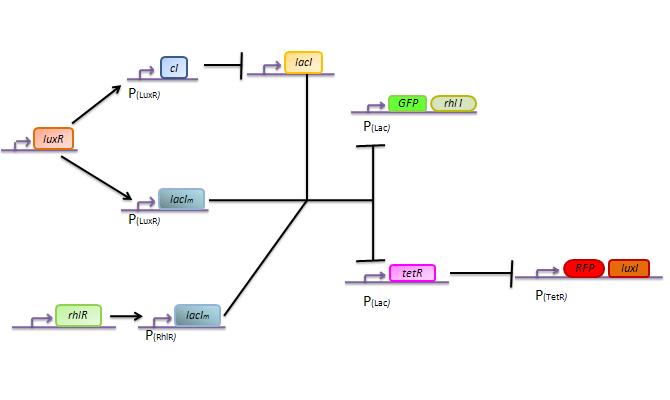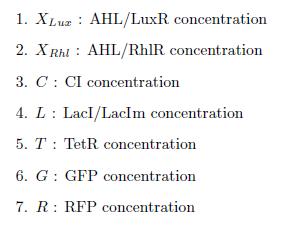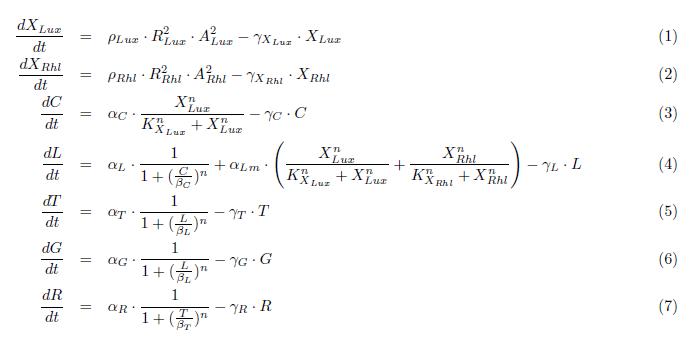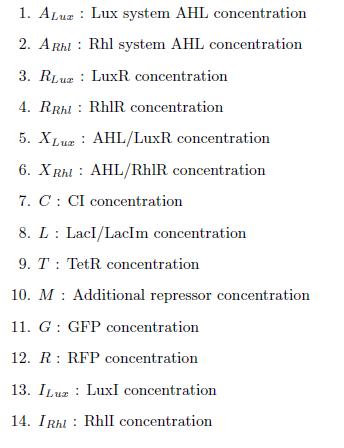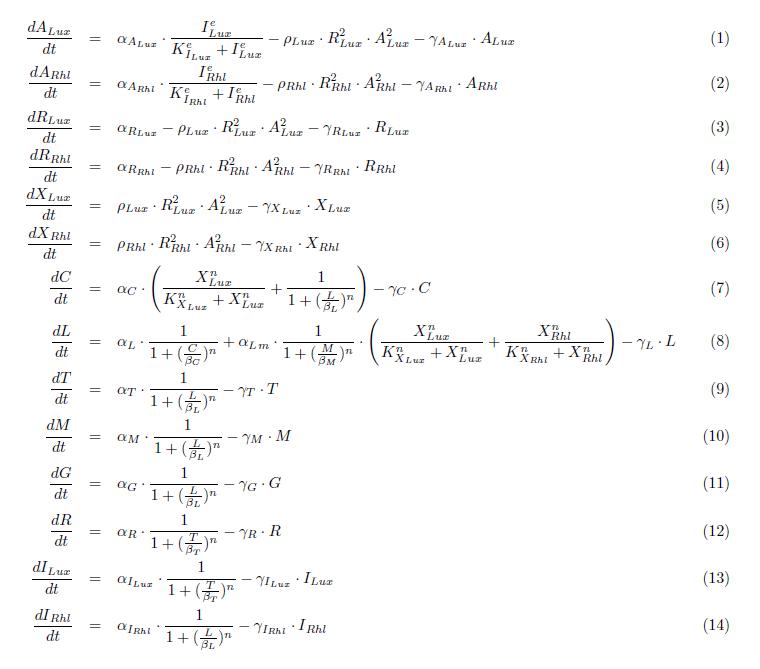Team:EPF-Lausanne/Modeling
From 2008.igem.org
| Home | The Team | The Project | Parts | 2-step PCR | Microfluidics | Modeling | Notebook |
|---|
Contents |
Double input model
Here we describe a semi-quantitative model of the Lux band-pass detector and the Rhl high-pass detector. The model describes each proteins and sending molecules involved in the system.
States
ODEs
Parameters
Simulation
Bistable switch model
States
ODEs
Parameters
Simulation
Primary results look promising. An RhlI-induced reaction gave the desired curves, well nearly. GFP still ends up too high. The other main problem is going to be the response time. But we have to wait until we have a complete and robust model to really start finding solutions to our problems. </p>
Have been considering LacI and LacIm as two different proteins. But after amino acid comparaison they are actually the same. Only the promoter and DNA sequenses are different.
Matlab
Titration of LuxI and RhlI te determine how the system would work without feedback. One can notice that the expression band for GFP is quite small.
Files
The Ordinary Differential Equations (ODE) of our system are listed in the following file :
Matlab files
media:Patterner.m
media:Simulation.m
<math><math>Insert formula here</math></math>
 "
"
